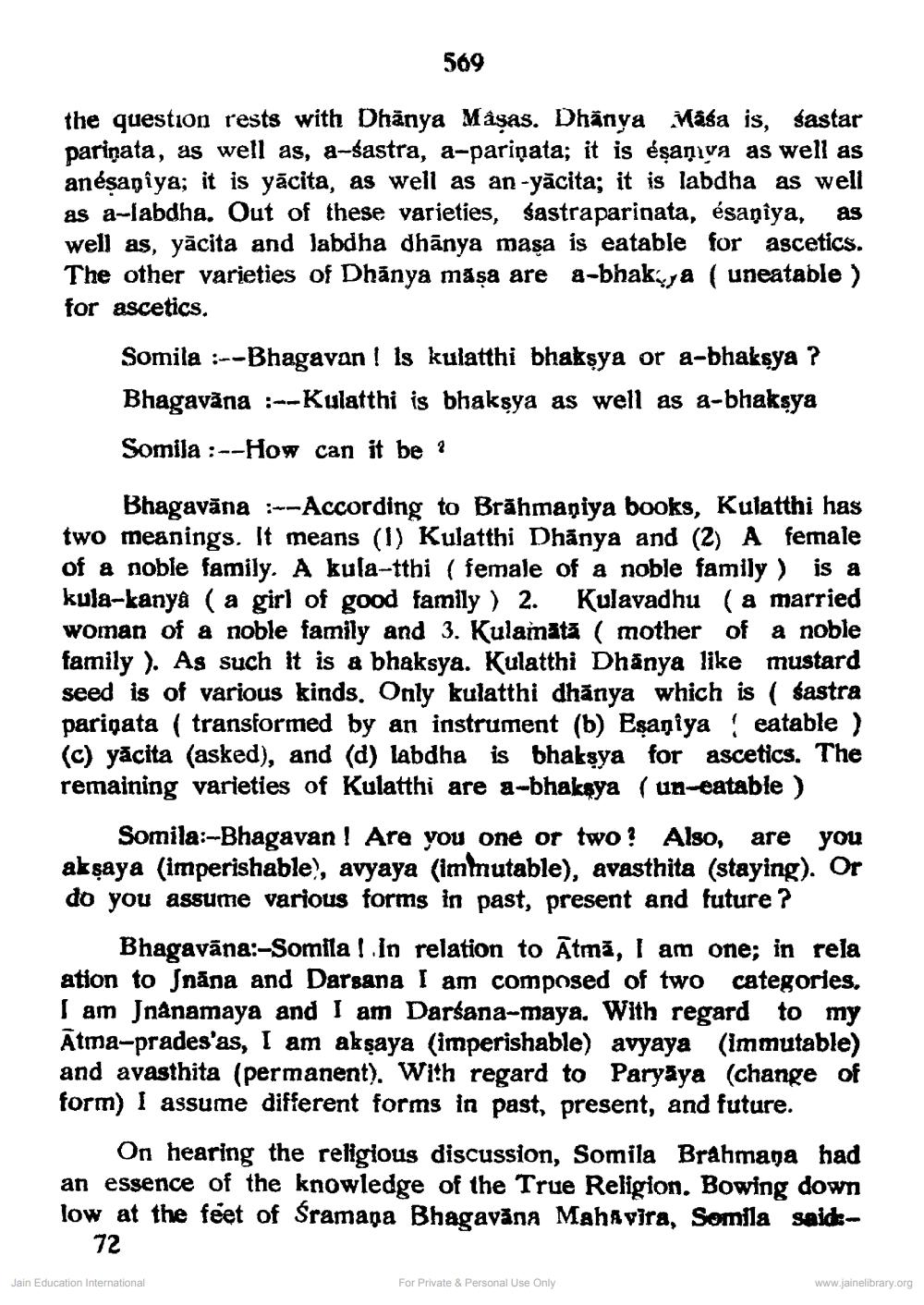________________
569
the question rests with Dhänya Maşas. Dhänya Mása is, sastar pariņata, as well as, 8-sastra, a-pariņata; it is éşanya as well as anésaniya; it is yācita, as well as an-yācita; it is labdha as well as a-labdha. Out of these varieties, Sastraparinata, ésaņiya, as well as, yācita and labdha dhānya masa is eatable for ascetics. The other varieties of Dhānya māşa are a-bhakuya ( uneatable ) for ascetics.
Somila :--Bhagavan ! is kulatthi bhakşya or a-bhaksya ? Bhagavāna :--Kulatthi is bhaksya as well as a-bhaksya Somila :--How can it be?
Bhagavāna :--According to Brāhmaniya books, Kulatthi has two meanings. It means (1) Kulatthi Dhanya and (2) A female of a noble family. A kula-tthi ( female of a noble family ) is a kula-kanya ( a girl of good family ) 2. Kulavadhu (a married woman of a noble family and 3. Kulainātā ( mother of a noble family ). As such it is a bhaksya. Kulatthi Dhänya like mustard seed is of various kinds. Only kulatthi dhānya which is ( sastra parigata ( transformed by an instrument (b) Esaniya eatable ) (c) yācita (asked), and (d) labdha is bhakşya for ascetics. The remaining varieties of Kulatthi are a-bhakaya (un-eatable )
Somila:-Bhagavan ! Are you one or two? Also, are you akşaya (imperishable), avyaya (immutable), avasthita (staying). Or do you assume various forms in past, present and future ?
Bhagavāna:-Somila ! . in relation to Ātmi, I am one; in rela ation to snāna and Darsana I am composed of two categories, I am Jnanamaya and I am Darsana-maya. With regard to my Ātma-prades'as, I am akşaya (imperishable) avyaya (immutable) and avasthita (permanent). With regard to Paryāya (change of form) I assume different forms in past, present, and future.
On hearing the religious discussion, Somila Brahmana had an essence of the knowledge of the True Religion. Bowing down low at the feet of śramana Bhagavāna Mahavira, Somila said
72
Jain Education International
For Private & Personal Use Only
www.jainelibrary.org




